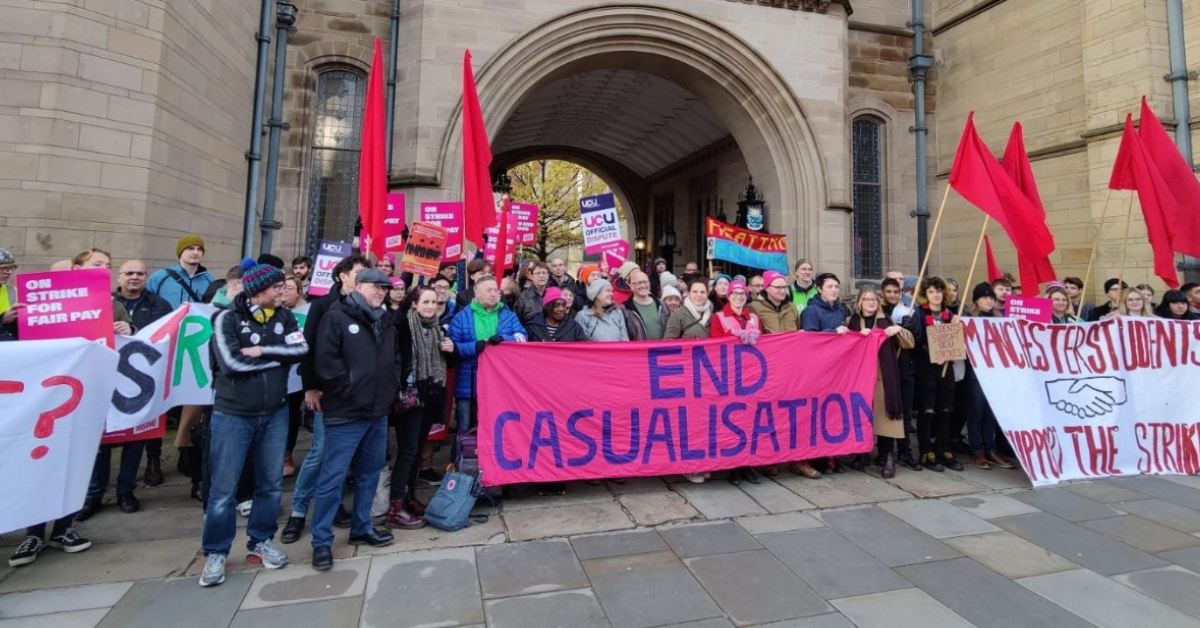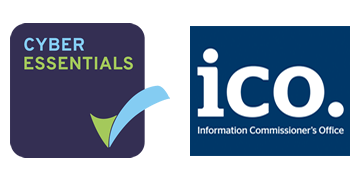This comprehensive analysis explores the paradigm of industrial relations and unionisation within the UK's higher education sector. It delves into the roles of key stakeholders, the significance of internal communications, effective strategies for engagement, real-world examples of industrial action, communication challenges and opportunities, and the overarching impact of robust internal communication. The discussion is supported by real-world examples and adheres to the Harvard referencing style..
Overview of Industrial Relations and Unionisation in UK Higher Education
Industrial relations within the UK's higher education sector have evolved significantly over the past few decades. Historically, universities operated with a high degree of autonomy, with academic staff enjoying substantial freedom in their roles. However, the increasing marketisation of higher education, coupled with financial constraints and policy reforms, has led to a more complex industrial landscape.
Trade unions, notably the University and College Union (UCU), have become pivotal in representing academic and support staff. Their roles encompass negotiating pay, advocating for fair working conditions, and safeguarding pension schemes. The UCU, representing over 130,000 members, has been at the forefront of several industrial actions, highlighting the tensions between university management and staff (House of Commons Library, 2022).
The establishment of the New Joint Negotiating Committee for Higher Education Staff (New JNCHES) marked a significant development in collective bargaining within the sector. This body facilitates negotiations between employers and unions on pay and related issues, aiming to foster a collaborative approach to industrial relations (UCEA, 2023a).
The Importance of Internal Communications in Trade Union Relations
Effective internal communication is the cornerstone of healthy industrial relations. Transparent and timely communication fosters trust, mitigates misunderstandings, and facilitates collaborative problem-solving. In the context of higher education, where institutions are multifaceted and staff roles diverse, the need for clear communication channels is paramount.
The University and Colleges Employers Association (UCEA) emphasizes that establishing agreed-upon facts is critical before decisions and compromises can be made. Both parties have an obligation to students and staff across the sector to clarify and understand months of pay and conditions negotiations (UCEA, 2023b).
Moreover, the complexity of issues such as pay disparities, workload concerns, and contract types necessitates ongoing dialogue. Employers have expressed a genuine willingness to understand and promote good practice in all key areas, indicating that there is potential for bridging gaps in approach between UCEA and the unions (UCEA, 2023a).
Key Stakeholders in Industrial Relations
Understanding the roles and perspectives of key stakeholders is essential for navigating industrial relations effectively. The primary stakeholders include:
1. University Management: Responsible for strategic decision-making, financial management, and ensuring the institution's sustainability. Management must balance competing interests, including staff welfare, student satisfaction, and financial viability.
2. Academic and Support Staff: Encompassing lecturers, researchers, administrative personnel, and technical staff, this group is integral to the institution's functioning. Their concerns often revolve around pay, working conditions, job security, and professional development opportunities.
3. Trade Unions: Bodies like the UCU represent staff interests, engaging in collective bargaining, advocating for fair policies, and mobilizing industrial action when necessary. Their role is crucial in voicing collective concerns and negotiating on behalf of members.
4. Students: As primary beneficiaries of educational services, students are indirectly affected by industrial relations. Disruptions due to industrial action can impact their learning experience, making them important stakeholders in these discussions.
5. Government and Regulatory Bodies: Entities such as the Department for Education and the Office for Students influence higher education policies, funding, and regulatory frameworks, thereby affecting industrial relations dynamics.
Building Effective Communication Strategies
Developing robust communication strategies is vital for pre-empting conflicts and fostering a collaborative environment. Key components include:
Establishing Transparent Communication Channels:
Action Plan:
- Share key updates with union representatives before public announcements.
- Utilise intranet portals, webinars, and newsletters to disseminate information.
- Make negotiation timelines and decisions accessible to all stakeholders.
Engaging in Early, Collaborative Conversations:
Action Plan:
- Conduct regular pre-policy meetings with unions to discuss upcoming changes.
- Co-develop communication frameworks with union representatives.
- Encourage leadership to attend union consultations.
Rationale: Early engagement fosters a sense of partnership and can de-escalate potential disputes.
Utilising Digital Tools for Inclusive Communication:
Action Plan:
- Leverage platforms like Microsoft Teams for live Q&As and collaborative updates.
- Implement secure email and messaging apps to communicate sensitive updates.
- Record key meetings and make them available to staff.
Rationale: Digital platforms can enhance accessibility and provide real-time updates.
Providing Training for Leadership and Union Representatives:
Action Plan:
- Offer joint training sessions on mediation and stakeholder engagement.
- Equip managers with briefing packs to align messaging across departments.
Rationale: Effective communication requires both institutional leaders and union representatives to develop skills in negotiation, active listening, and conflict resolution.
Establishing Feedback Loops
Action Plan:
- Conduct anonymous surveys post-negotiations to assess staff sentiment.
- Create open forums where staff can raise concerns or ideas without fear of reprisal.
- Schedule quarterly town halls with leadership to address union feedback publicly.
Rationale: Open feedback channels create space for continuous improvement and can highlight emerging concerns early. Transparent follow-ups demonstrate that concerns are taken seriously, building trust among stakeholders.
Real-World Examples and Communication Dynamics
The 2018–2023 UK Higher Education Strikes
Over several years, the University and College Union (UCU) led strikes across UK universities over disputes related to pensions, pay, and workload.
Challenges: Media scrutiny required universities to craft consistent and neutral public statements while addressing internal staff and student concerns.
Opportunities: Institutions used digital tools, including email updates and virtual forums, to maintain open communication during strikes (UCEA, 2023a).
2023 University of Brighton Staff Redundancies
Protests and student occupations highlighted the communication breakdown between staff, unions, and management.
Challenges: The lack of timely engagement with unions exacerbated tensions, leading to visible public demonstrations.
Opportunities: Incorporating union representatives early in decision-making processes could have mitigated resistance and improved stakeholder alignment.
The Marketisation of Higher Education
As universities adopted more business-like models, tensions arose over pay gaps, casualization, and academic workloads. Institutions like the University of Manchester navigated these tensions through joint task forces to address concerns collaboratively (Tribune, 2021).
Communication Challenges and Opportunities
Communication in the context of industrial relations within UK higher education is fraught with complexities that demand careful navigation. One of the most significant challenges is the inherent complexity of the issues under negotiation. Topics such as pay scales, pension reforms, and workload allocation are intricate, involving multifaceted factors that make clear and concise communication a daunting task. Simplifying these issues without losing essential details can lead to misunderstandings, while overly detailed communication risks alienating stakeholders who may find it difficult to grasp the nuances.
Another challenge lies in addressing the diverse audiences within higher education institutions. Academic staff, administrative personnel, students, and external stakeholders each have unique concerns and expectations. Tailoring messages to resonate with such a varied audience requires a nuanced approach, yet inconsistency across departments can lead to fragmented messaging.
Adding to these difficulties is the intense public and media scrutiny often accompanying industrial action in the sector. Disputes between staff and university management frequently make headlines, placing institutions under pressure to manage their public reputation while maintaining authenticity in their internal communications. Missteps in this arena can result in reputational damage, exacerbating tensions both internally and externally.
However, these challenges also present significant opportunities for improvement. Proactive engagement with trade union representatives, for instance, allows universities to address potential conflicts before they escalate. Early discussions can help clarify positions, foster mutual understanding, and prevent the kind of breakdowns that lead to industrial action.
The digital transformation sweeping across higher education also provides opportunities to enhance communication. Digital platforms enable real-time updates, facilitate more inclusive discussions, and offer new ways to reach stakeholders efficiently. From virtual town halls to collaborative forums, these tools can bridge gaps and ensure that communication is accessible to all.
Finally, the opportunity to unify messaging across departments represents a critical advantage. Establishing clear protocols and ensuring consistent communication practices help to align internal and external messaging, fostering a sense of cohesion and trust across all stakeholder groups.
The Impact of Strong Internal Communication
Strong internal communication has a transformative impact on industrial relations within higher education institutions. When communication is transparent, it fosters a sense of trust between university management and staff. Employees who feel informed and valued are more likely to support institutional decisions, even in challenging circumstances. This trust becomes the foundation for building resilient relationships that can withstand periods of tension.
Moreover, effective communication plays a crucial role in reducing the likelihood of disputes escalating into industrial action. By maintaining open lines of dialogue and addressing concerns promptly, universities can resolve conflicts collaboratively before they reach a critical stage. This not only helps to minimize disruptions to the institution’s operations but also preserves positive working relationships.
The reputation of an institution is also significantly influenced by its communication practices. Universities that prioritize transparency and engage proactively with stakeholders are more likely to be viewed as credible and trustworthy. This positive perception extends beyond staff to include students, alumni, and the wider community, enhancing the institution’s overall standing.
In addition, strong communication contributes to improved staff morale. When employees feel that their voices are heard and their concerns are addressed, they are more engaged and committed to their roles. This, in turn, enhances productivity and creates a more harmonious work environment.
Ultimately, the impact of strong internal communication extends beyond individual institutions. It sets a standard for the sector, demonstrating how collaborative and transparent approaches to industrial relations can drive long-term success. By embedding these practices, higher education institutions can navigate the complexities of industrial relations while fostering a culture of mutual respect and shared purpose.
Conclusion
Industrial relations in UK higher education are complex, shaped by evolving market dynamics, workforce expectations, and policy reforms. To navigate this landscape effectively, institutions must prioritize robust internal communication strategies. By fostering transparency, engaging with stakeholders early, and leveraging digital tools, universities can build trust, reduce conflicts, and create a more collaborative working environment.
As highlighted in recent case studies, proactive communication plays a critical role in mitigating disputes and supporting institutional goals. Leaders in the higher education sector must view communication not as an ancillary function but as a strategic priority.
For further insights and support in implementing effective communication strategies, explore resources from the University and Colleges Employers Association (UCEA).
FAQs
Q1. What is the role of trade unions in higher education?
Trade unions, such as the UCU, represent academic and support staff, advocating for fair pay, better working conditions, and job security. They engage in collective bargaining and mobilize industrial action when negotiations fail.
Q2. Why is internal communication important in industrial relations?
Internal communication fosters trust, prevents misunderstandings, and promotes collaborative problem-solving. It ensures that all stakeholders are informed and engaged, reducing the likelihood of conflicts escalating.
Q3. How can universities improve communication with unions?
Institutions can enhance communication by engaging unions early in decision-making processes, maintaining transparency, using digital tools for updates, and establishing open feedback mechanisms.
Q4. What are the key challenges in communicating during industrial action?
Challenges include managing diverse stakeholder expectations, maintaining consistent messaging, and addressing public and media scrutiny while remaining neutral and authentic.
Q5. What are some real-world examples of industrial action in UK higher education?
Significant examples include the 2018–2023 UCU-led strikes over pensions and pay, and the 2023 University of Brighton protests over staff redundancies.
________________________________________
References
• University and Colleges Employers Association (2023a). Pay and conditions negotiations: Lessons from the 2023 strikes. [Accessed 10 January 2025]. Available at: https://www.ucea.ac.uk
• University and Colleges Employers Association (2023b). The importance of collaboration in higher education industrial relations. [Accessed 10 January 2025]. Available at: https://www.ucea.ac.uk
• Tribune (2021). University workers are fighting for the future of higher education. [Accessed 10 January 2025]. Available at: https://tribunemag.co.uk
• AHUA (2023). Industrial relations and the HE sector: Opportunities and challenges. [Accessed 10 January 2025]. Available at: https://www.ahua.ac.uk










